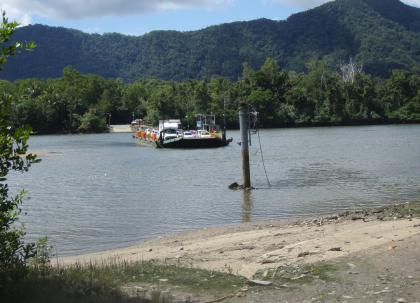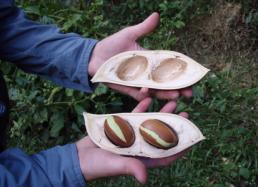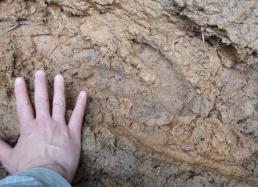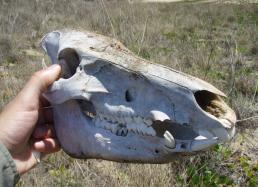6: Daintree National Park
Imagine standing on a beach sandwiched between pristine rainforests and beautiful blue ocean water. To get to Daintree, you have to take a ferry across the Daintree River, which is surrounded by thick rainforests. One of the amazing things about Daintree National Park and Cape Tribulation is that the rainforests come right down to the edge of white sand beaches and the river and ocean.
Although incredibly beautiful, the park’s one downfall is that you can’t swim in the ocean at the beach. Between the stinging jellyfish, sharks, and saltwater crocodiles, most of the beaches along north Queensland’s eastern edge are off limits. It’s really is too bad because there are no showers, and after a week of hiking through humid rainforests and sleeping in a tent, we sure could have used a dip in the ocean water. But, camping on the beach in Daintree National Park was completely worth it. The biodiversity was astonishing.
One of the most ecologically important animals of the Queensland rainforests is the Southern Cassowary (Casuarius casuarius), a larger flightless bird. This endangered species is the third tallest living bird and can stand over six feet high. Its body is covered in jet-black feathers, its neck is a striking blue with a bright red waddle, and the crown of its head has a large protrusion called a casque.
Although usually shy, the males can get particularly aggressive while guarding the eggs and chicks—yes, the males are responsible for the care of the eggs and young in this species! Cassowaries will rarely attack unless provoked, but they do have a long, dagger-like claw on their inner toe that can inflict a lethal wound if they kick you.
The Cassowary is considered a “keystone species” because many rainforest plants rely entirely on the bird to disperse seeds. In fact, the seeds and fruit of more than 70 species of rainforest plants are so large that they can be dispersed only by the giant cassowary. Another 80 plants are listed as also being assisted by the Cassowary’s eating habits. Ecologists predict that if the Southern Cassowary were to become extinct, a whole host of other species would soon follow.
Although we didn’t see one of these beautiful endangered animals this trip, we did come face-to-face with one on our last trip. And to be honest, it was a bit intimidating to encounter a rainforest bird that was not only taller than I am, but is also known to have attacked humans. We did find a footprint of a Cassowary on one of the more desolate trails during this trip, but it always makes me feel good to know that these large birds are out there, contributing to the ecology of the Australian rainforests.
In addition to its extraordinary diversity of plants, reptiles, amphibians, birds, mammals, and more, Daintree Park is also home to many different species of spiny ants (Polyrhachis spp.) The ant collecting is great, and these rainforests are proving to be some of the best on the trip for ant diversity. Again, our goal is to locate not only those areas that harbor the greatest number of animal species, but the greatest genetic diversity in these species, which will help ensure the survival of a healthy population.
While hunting for spiny ants and other ant species, we came across a kangaroo skull. One of the most common animals in Australia is the group called the Macropods, of which kangaroos are a member. This group includes kangaroos, wallabies, tree-kangaroos, pademelons, and several others marsupials.
We have seen several species of kangaroos and wallabies on this trip, but seeing this skull really helps you understand how their teeth and jaws can grind up the tough, fibrous plant material that makes up their diet. With pouches for holding their young and powerful hind legs, the kangaroo is often the animal that most people associate with Australia, and we have certainly enjoyed seeing them in the wild.
It’s hard to believe my time in Australia is almost over. We’ll head back to Townsville in a couple of days to check in with my scientific collaborators before starting the journey back to Chicago. I’ll give you one last update before we leave Australia.
Looking forward to a shower soon,
Dr. Corrie Moreau








